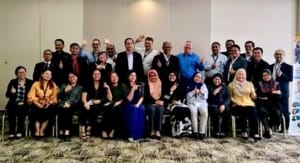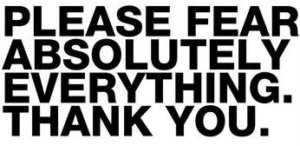I met up with a friend who works in another Mystery Shopper research firm.
We like to compare notes on Mystery Shopper research and share practices that enable great outcomes.
Over a recent coffee we talked about how senior leadership, and their reactions to Mystery Shopper results, have a direct link to the success of the program.
Terror in the Boardroom
My friend shared this story.
“Dan – here’s what happened…most of the Mystery Shopper results were ‘ok’.
Nothing spectacular, but for an organization of their scale, the essential compliance KPIs were being met.
But one of their Customer touchpoints really struggled with their turnaround time commitment.
 Rather than receiving a reply within 2 – 3 days, reply time-frames ranged from one week to no reply received within the time-frame promised.
Rather than receiving a reply within 2 – 3 days, reply time-frames ranged from one week to no reply received within the time-frame promised.
We knew what we were getting into when we took the program.
But even we were taken aback when – after submitting the final results – the Client asked us to edit out the poor results.
And not just once – we had to redo the complete deck and set of reports three times before they were satisfied.
Later on a Service Quality Manager told us what happened.

The Blame Game
When senior management saw the poor results for turnaround time, they yelled at the Participants and launched into assigning blame.
Of course, the Participants were stunned into silence.
And the unspoken message came across loud and clear.
It’s safer to hide bad results then to risk angering Senior Management.
Clearly a company culture issue. And one that kills any chance at systemic improvement.
Avoid Terror in the Boardroom
It’s sad to see a viable Mystery Shopper program go down in flames due to fear of Senior Management.

The Mystery Shopper Agreement
I’d suggest is asking Senior Management sign a simple agreement when the Mystery Shopper program is approved.
Perhaps something like this:
The purpose of our Mystery Shopper program is to ________. It’s likely we will uncover things that we want to hear – and things that we don’t.
We will resist the natural urge to cleanse results to make them look better.
We can only get better if we truly know how we’re doing – and for CX-based Mystery Shopper programs, how our Customers are experiencing us.
With this in mind, we will take the good with the bad, the great with the not so great, look at results in perspective – and use them to help us move forward.
Let your Research Partner present findings

Mystery Shopper Research Partner
Your Research Partner is in the best position to share methodology, compare and contrast findings with other organizations and give specific examples of both the good and not so good results with ideas for improvement.
The Research Partner operates outside the politics of the organization. That brings an important level of objectivity and credibility to the process.
When the Research Partner doesn’t present – it’s left to someone within the organization to share findings
But when findings are presented ‘in-house’, a lot of context, examples and recommendations go missing.
And the politics can be more ‘highly charged’.
We hope these few words on Mystery Shopper research are helpful to you.
Avoid terror in the boardroom! And thank you for reading,
Daniel








 It’s never fun for a Training Provider to have to guess at what it is that you want – risky business indeed.
It’s never fun for a Training Provider to have to guess at what it is that you want – risky business indeed.





















 “Hmmmm (they say to themselves) – how could I drag the calls today?”
“Hmmmm (they say to themselves) – how could I drag the calls today?”
 As I like to say when I transition into ‘guru’ mode – when your Agent achieves Quality – and it just feels right – then AHT will be what it will be.
As I like to say when I transition into ‘guru’ mode – when your Agent achieves Quality – and it just feels right – then AHT will be what it will be. Did you ever order chocolate lava cake for dessert in a restaurant? It’s delicious.
Did you ever order chocolate lava cake for dessert in a restaurant? It’s delicious.
 As the world increasingly becomes digital, Customers reach out to voice channels when their issue is complex or they are confused or unhappy with something.
As the world increasingly becomes digital, Customers reach out to voice channels when their issue is complex or they are confused or unhappy with something.

 We’d fulfill everything from compact discs through to gardening tools and children’s toys.
We’d fulfill everything from compact discs through to gardening tools and children’s toys. We’d package and ship off things like posters, standees (those life sized cut-outs and backdrops) and even one of a kind promotional items for VIP receptions and giveaways.
We’d package and ship off things like posters, standees (those life sized cut-outs and backdrops) and even one of a kind promotional items for VIP receptions and giveaways. No fan ever wanted to receive an autographed Tom Cruise photo with a big oily smudge on it.
No fan ever wanted to receive an autographed Tom Cruise photo with a big oily smudge on it. We would always package the first kits ourselves so that we could try out what worked (or didn’t).
We would always package the first kits ourselves so that we could try out what worked (or didn’t). Then back to the phone.
Then back to the phone.


 When I was running large Centres in the U.S. back in the 90s, we purposefully hired our Contact Center Agents from places like McDonalds and Burger King.
When I was running large Centres in the U.S. back in the 90s, we purposefully hired our Contact Center Agents from places like McDonalds and Burger King.